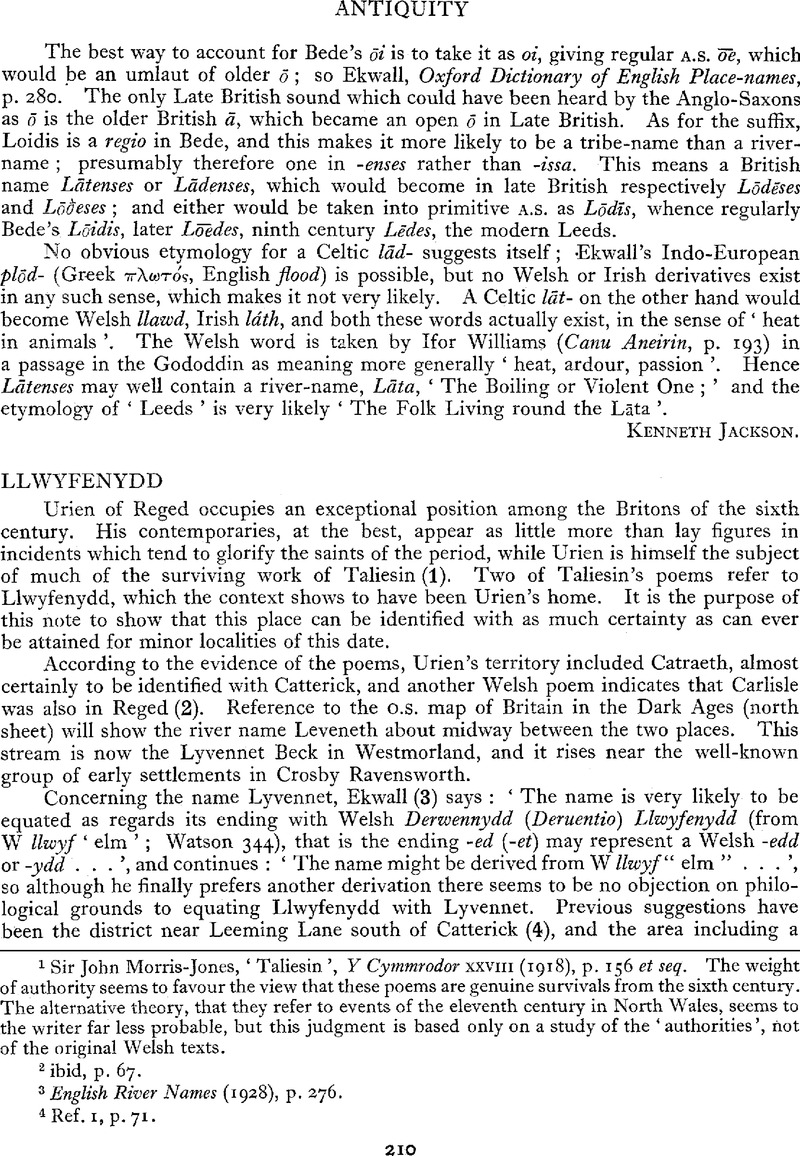No CrossRef data available.
Article contents
Abstract

- Type
- Notes and News
- Information
- Copyright
- Copyright © Antiquity Publications Ltd 1946
References
1 SirMorris-Jones, John, ‘Taliesin’, Y Cymmrodor XXVIII (1918), p. 156Google Scholaret seq. The weight of authority seems to favour the view that these poems are genuine survivals from the sixth century. The alternative theory, that they refer to events of the eleventh century in North Wales, seems to the writer far less probable, but this judgment is based only on a study of the ‘authorities’, not of the original Welsh texts.
2 ibid, p. 67.
3 English River Names (1928), p. 276Google ScholarPubMed.
4 Ref. 1, p. 71.
5 Watson, W. J., Celtic Place-names of Scotland, p. 344Google Scholar.
6 A good case could be made for associating the site of Argoet Llwyfein with the river Leven which enters the Tees near Yarm.
7 Collingwood, R. G., Cumberland and Westmorland Trans., N.S. XXXIII, p. 206Google Scholar. R.C.H.M., Westmorland, p. XLVI, XLVII, and map on p. 82. Nos. 27 and 36 refer to the Inventory.




